Dying with purpose: How a field full of bodies in North Carolina helps solve mysteries.
In the mountains of Cullowhee, North Carolina, off a gravel road near a university and behind an apartment complex, dozens of bodies are organized in rows above ground.
These corpses, exposed to the elements, are often covered in make-shift cages because, as researchers put it, the facility has a vulture problem.
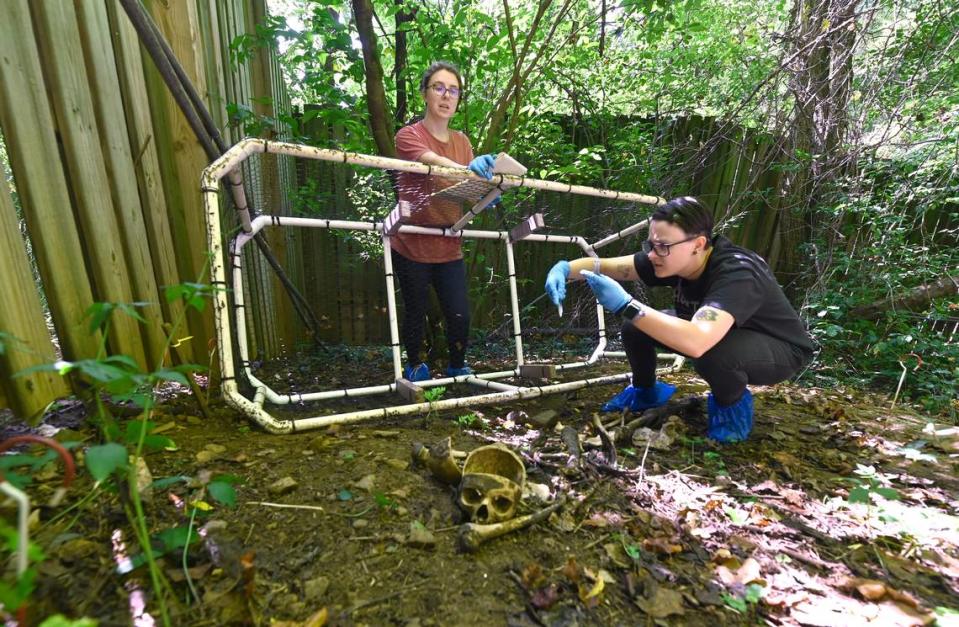
Depending on the time of year and when the last body was placed in the research field, you’ll see a mix of skeletal remains and bones with some flesh still attached.
Hip bones, dentures and pacemakers stick out among the remains because most of the body donors who make it to the facility are over 60. During a visit in early September, a swath of gray hair had blown into a corner of the fenced-in enclosure and professors say the birds will use it to build their nests.
Students and faculty study these remains to better understand an age-old question — what happens when we die? The research helps law enforcement and forensic anthropologists identify human remains and understand decomposition.
Over two dozen people every year, most from North Carolina, donate their bodies to Western Carolina University’s Forensic Osteology Research Station (FOREST).
FOREST opened in 2007 and is one of nine such facilities internationally, according to the university.
The expertise provided by forensic anthropologists is just one tool that helps law enforcement identify unknown remains and solve criminal cases. Another technique gaining traction is forensic genetic genealogy.
Forensic genetic genealogy involves analyzing DNA from human remains and determining who the person might be related to. While this method is becoming increasingly common, it is expensive and difficult to access for most law enforcement agencies. Because of this, forensic anthropologists remain one of the main ways these identifications are able to take place.
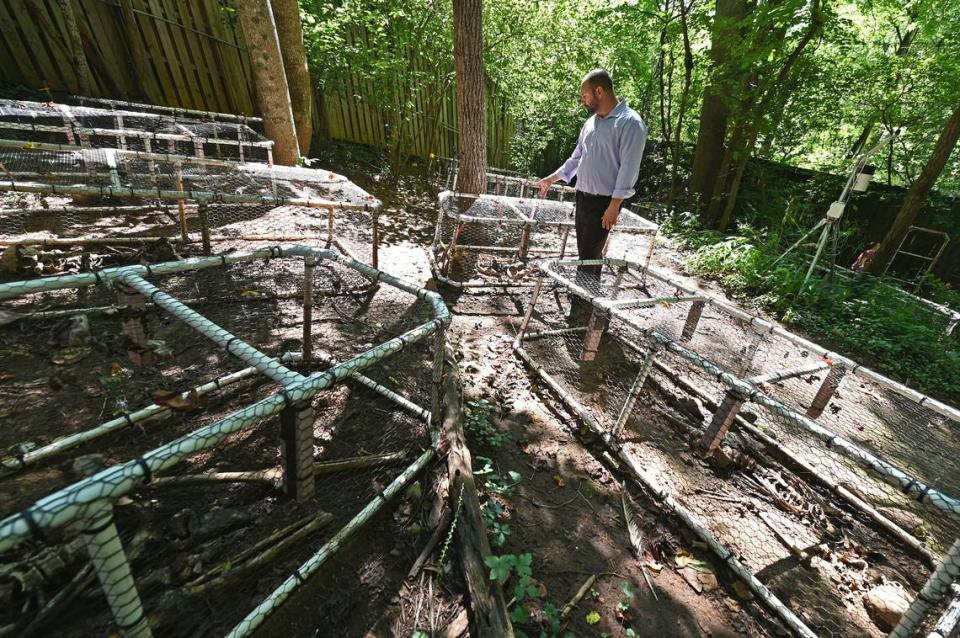
Nicholas Passalacqua, the university’s director of forensic anthropology, says the facility serves as a resource not only for educators and students, but also for the community.
“A lot of what we do here at Western Carolina University is assisting with law enforcement in terms of search and recovery for human remains,” Passalacqua said.
The university is developing an ethically-sourced skeleton collection for teaching and forensic anthropology research. This research helps scientists learn how injuries and medical implants are affected in death and better understand how bodies decompose and interact with the environment.
How FOREST helps police
Scientists don’t know as much as people might assume about what happens when a person dies and how exactly human decomposition works, Passalacqua said.
“A big part of the human decomposition facility is essentially constantly tracking the rate of decomposition of our donors along with the environmental factors that are impacting those rates of decomposition,” Passalacqua said.
Researchers develop data models to show how long a person has been dead, how long they have been in the location they were found in, and who they might be.
Once bodies at FOREST have decomposed and become skeletons, they are “recovered” and brought into the university’s labs for cleaning and research, said Rebecca George, assistant director of forensic anthropology facilities.
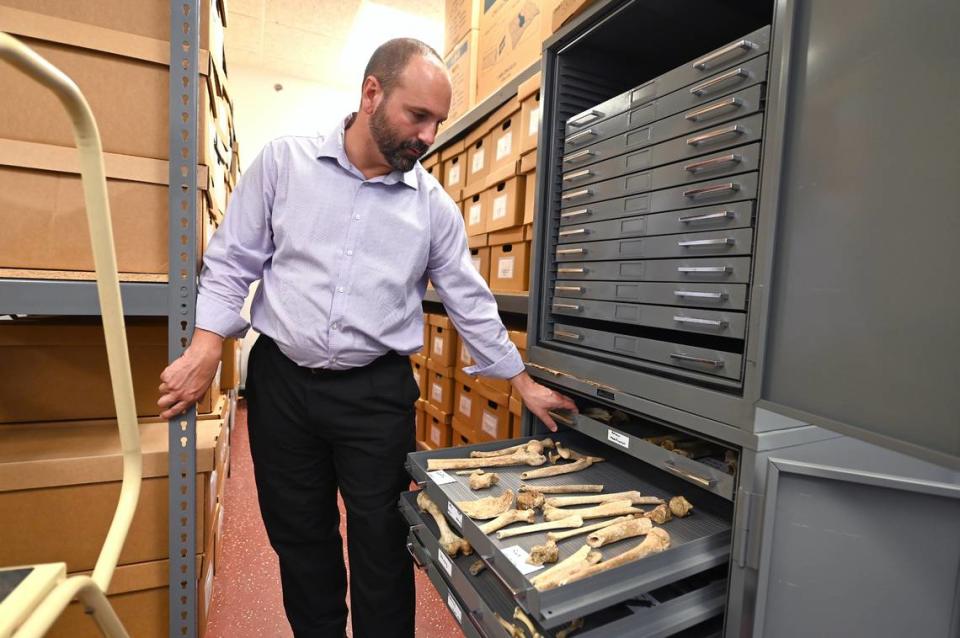
Decomposition typically takes about nine months, George said. The Charlotte Observer was able to watch as George and her student volunteers worked on their first recovery of the fall semester in September.
Students carefully collected the skeletons and used a filter to sift through the remains, picking out large chunks of bone that may have flaked off during decomposition. Chemistry students ran tests on the soil and air to detect chemicals the bodies may have emitted into the environment.
The facility also partners with law enforcement to conduct research, aid investigations, and to train cadaver dogs, which help search for human remains.
“A lot of times we’re involved when a bone might be found, and people aren’t sure if that bone is human or not,” Passalacqua said. “By having forensic anthropologists look at a picture, usually a text of a bone, we can very rapidly say: ‘This isn’t a human bone. Law enforcement don’t need to waste more resources searching for remains.’”
If the bones are human, forensic anthropologists can meet investigators in the field and help determine where other remains might be found based on the environment. Staff can work with medical examiners to determine identity and cause of death.
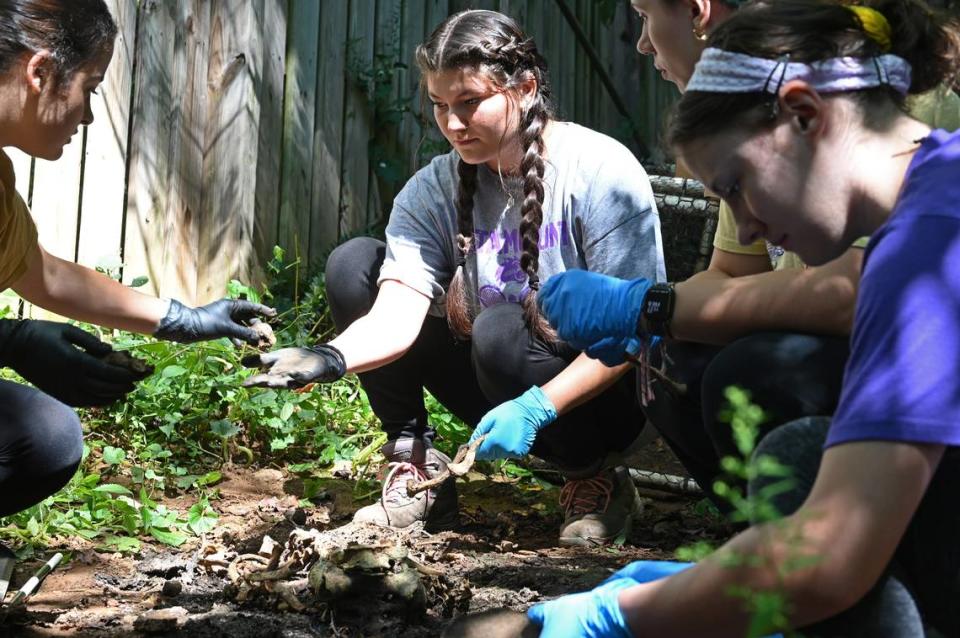
Donors to FOREST have the option to consent to “destructive testing.” Destructive testing allows researchers to inflict different injuries on a body to see what those injuries might look like after death, Passalacqua said.
One example of destructive testing is the fire simulation FOREST performs 1-2 times a year for investigators with the Bureau of Alcohol, Tobacco, Firearms and Explosives.
In the simulation, a donor’s body is placed in a makeshift room with furniture and the entire room is set on fire. Investigators and researchers then observe how the body burns, what it looks like after the fire, and how to identify different injuries after a body has been burnt.
“A lot of times somebody might die in a house fire, and it’s unclear how or why that fire started, or if that person was alive or dead before the fire,” Passalacqua said. “By working with fire scene investigators … we can get a better idea of how bodies burn under these controlled circumstances.”
For at least one of these fire exercises researchers have given a body a head injury to determine how it would appear after burning, and for another placed commercial-grade sperm on a body to determine whether investigators could prove rape after the substances burned, Passalacqua said.
Donating body to science
The reasons why people choose to donate vary, George said. But one increasingly common reason has to do with the environment.
“One of the big reasons … is that they’re realizing how dangerous for the atmosphere traditional funeral practices are,” George said.
Embalming fluid can leak into the ground when a person is buried, concrete vaults that hold coffins will remain in the ground, and cremation is a concern for greenhouse gas emissions, George said.
Passalacqua and George said the facility is part of something called the green burial movement.
“Nothing goes to waste out here,” George said.
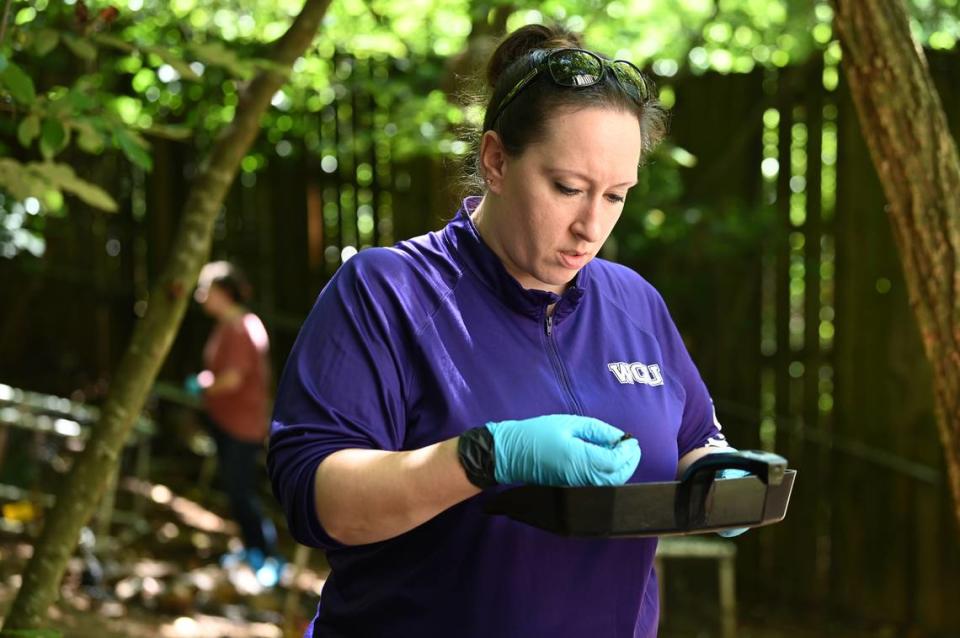
Hair can be used by birds to build nests, bones come back into the lab for teaching and research in perpetuity and it’s something that people really believe in, George said.
Body donation involves bequeathing, or willing, one’s remains after death. This process can be completed by the person themselves while they are alive, or the person’s next of kin.
“Donors don’t have to be here, there’s no requirement that bodies be sent here,” George said. “This is a choice … and that is the biggest gift that you can give anybody is your body in perpetuity.”
A lot of donor families keep in touch with researchers at FOREST and may even schedule visits, George said. Respect is critical during this process because loved ones are still grieving.
“Even if they didn’t have loved ones in life, now they’ve got this family of us to take care of them. And that is the biggest aspect is that these are still people, you still have to respect them,” George said.
Donors must fill out paperwork providing some biological information to the university including their weight and whether they have any contagious diseases. Donors with these diseases or who are over 250 lbs may still be accepted if they are cremated and given approval by the facility.

